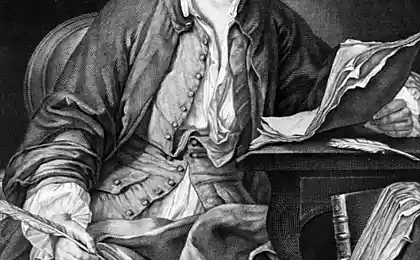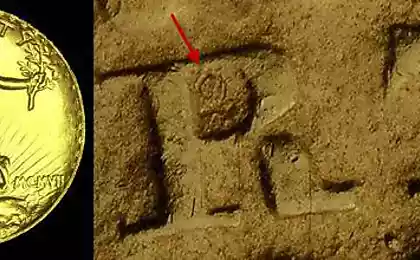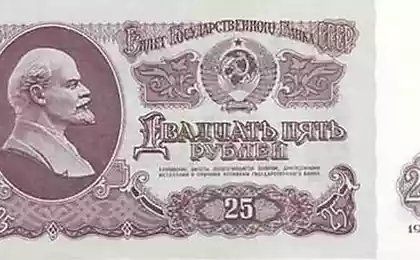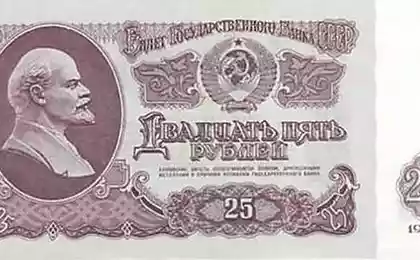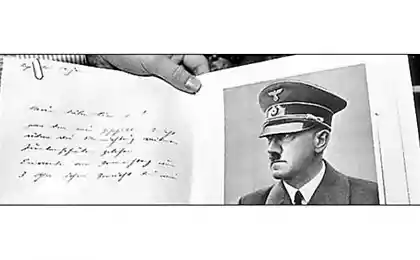251
The Three Great Fakes in History
Any object or structure that has survived to this day has its historical value. And the more ancient these objects, the more they are able to attract the attention of people. Therefore, among the so-called antiquities you can find many outright fakes, there is a blatant falsification of history.
Fake coins, jewelry, paintings, false documents, chronicles - this is well known, and this in principle no one today will not surprise. However, not everyone knows that among the famous architectural historical monuments that have gained worldwide fame, there are also fakes. And some of these forgeries are even on the World Historical Heritage list. And the bigger the fake, the easier it is to convince people of its authenticity.
Three great fakes. Sometimes the falsification of historical monuments of culture was carried out on a state scale, and sometimes it was the work of a small group of people. Some of them were hungry for money, some for fame, and some were fulfilling a certain order. Since the XVI century, a huge number of historical forgeries have been made, and, unfortunately, this process is not finished and continues to this day. We will talk about the most notorious historical falsifications of historical monuments.
Troy and Schliemann's gold is one of the greatest falsifications in history.

What is it? Is it an attempt to pass off wishful thinking, or is it an obvious falsification, the purpose of which is to attract the attention of the world community to this historical monument, and as a result - the banal enrichment of a particular group of people? Many serious scholars consider Schliemann’s discovery of the ruins of Troy a banal hoax, and Schliemann himself a world-class fraud. And in fact, if you manage to visit the ruins of Troy, try to ask the guide one of the questions voiced in the film – you will not get an intelligible answer. For many years, the question of where the legendary Troy was, excited the minds of scientists and adventurers, and just readers of Homer's poem. Someone would have discovered that Troy is actually medieval Constantinople. The only way to stop this search was to find some ruins on the shores of the Bosphorus and declare them the ruins of Troy. With the help of Schliemann, this task was successfully solved. The search for true Troy ceased for decades. But gullible tourists fell on the Shlimanovskaya Troy. Travelers come here from all over the world to see the ruins of the city described by the great Homer. Unfortunately, the falsification of Troy is far from the only case in archaeology.
Egypt. Tutankhamun’s tomb is perhaps the biggest falsification of history.

Fifty years after the false discovery of Troy, a new sensation will overshadow even Schliemann’s deeds. In November 1922, the world was surrounded by sensational news. In the Egyptian Valley of the Kings was discovered a grand burial – the tomb of Pharaoh Tutankhamun. The uniqueness of this find was not only in the richness of the tomb itself. The very figure of young Tutankhamun was considered mythical. And information about this man was limited to only one or two seals on which his name was written, and even then, without specifying the royal title. Many scholars did not consider Tutankhamun a king at all, at best just a nobleman. However, the discovery in November 1922 changed a lot. The man who made this discovery instantly became the No. 1 Egyptologist in the world. He was a professional archaeologist, Howard Carter. Today, many researchers of Egyptian antiquities suggest that Carter’s find is not a grand discovery, but a grand hoax. Almost 10 years spent in the Valley of the Kings, Howard Carter was engaged not in the search for the tomb, but in falsification, because the burial of Pharaoh Tutankhamun is more like a scenery than a real tomb. The Great Wall of China isn’t really that old.

This unique structure stretches across China. Its length is more than 6400 kilometers, the height reaches 7 meters, and the thickness is 3 meters. It is believed that the construction of the wall began in the III century BC, and ended in the XVII century AD. So, according to the historical version accepted today, the construction lasted almost 2000 years. History has never known such a long time. Everyone is used to this historical version, and few people think about its absurdity. Any construction, especially such a large-scale, should have a specific practical purpose. Who is going to start a construction project that will last for 2,000 years? Of course, no one. Because it doesn't make sense.
The ancient Chinese wall is a myth, as is the history of China. Tom has plenty of evidence. And the most important historical question is why did the Chinese build this wall for so many years? Watch the movie and you may find answers to all these questions.
Myths about the past of peoples, about the authenticity of historical monuments were formed in those days when people had a very vague idea of life even in neighboring cities, not to mention distant countries and continents. Therefore, any story told by a visiting traveler was accepted by people on faith. Today we have access to a huge amount of historical information, we have the opportunity to see the world and make sure that this information is true. Therefore, exploring ancient cities and modern museums, climbing the ruins and descending into tombs, we should look at the world with our own eyes, not only with the eyes of guides. After all, the more attentive we are to history, the less space there will be for fiction and forgery.
source
Source: /users/147
The tour is not for the faint of heart—the path of death
10 anomalous phenomena that will be given a scientific explanation in the next 100 years


